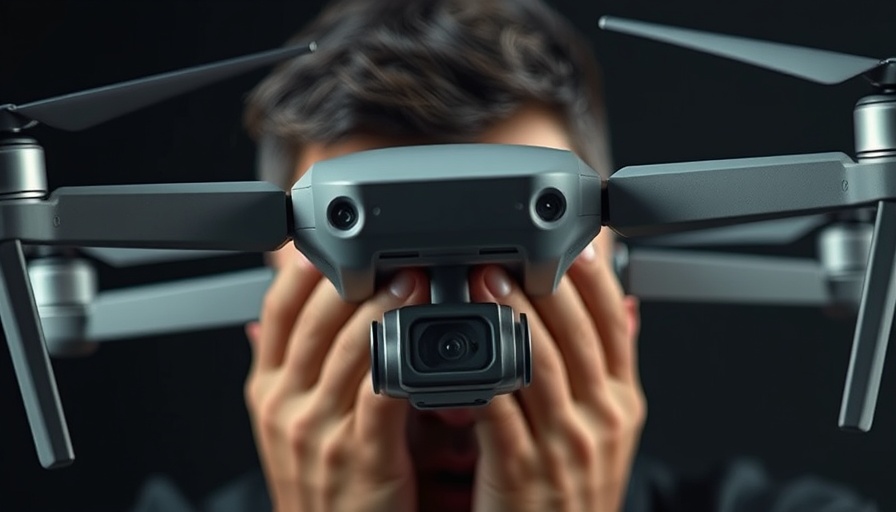
Why Drone Enthusiasts Rethink the Mavic 4 Pro
In the ever-evolving landscape of drone technology, enthusiasts often find themselves reevaluating the tools they use based on their specific needs. For some, this has meant looking beyond the Mavic 4 Pro, a model that had initially promised a premium flying experience. Eddie Nunez, a prominent voice in the drone community, shared an insightful perspective on this model in his recent video, "Why I don’t fly the Mavic 4 Pro." Nunez’s assessment raises critical points that resonate with many drone operators who prioritize efficiency and usability in their aerial ventures.
In "Why I don’t fly the Mavic 4 Pro," Eddie Nunez dives into the nuances of drone performance, raising compelling issues that merit deeper exploration.
Lost Time: The Prolonged Absence of the Mavic 4 Pro
Nunez’s experience with the Mavic 4 Pro highlights a significant factor in technology adoption: time away from equipment can shed light on its utility. After lending his drone to the Pilot Institute for tutorials, he found himself without it for over two months. Strikingly, he noted that not missing it even once during that period sparked deep reflection on the drone’s performance. This sentiment is crucial when evaluating the longevity and practicality of high-end drones.
Performance Under Pressure: Speed and Agility Matters
The Mavic 4 Pro falters in areas pivotal for many professionals, namely speed and agility. Nunez points out that compared to other models like the Air3s, the Mavic 4 Pro feels significantly slower and less nimble. For drone operators who rely on quick maneuvers—such as those in real estate filming or action photography—this can severely limit its effectiveness. The importance of swift responsiveness and maneuverability cannot be overstated; in highly competitive fields, even slight delays can lead to missed opportunities.
Vertical Video Feature: A Cause for Frustration
A notable critique from Nunez focuses on the Mavic 4 Pro’s limitations in vertical video capture. The fixed vertical camera angle necessitates compromises that can frustrate videographers looking for versatility. For real estate professionals, where wide-angle views can optimize space presentation, the restrictions posed by a 28mm field of view become even more pronounced. Understanding these limitations can help users gauge whether the Mavic 4 Pro suits their operational style or if they would benefit more from alternatives.
The Camera Quality: A Silver Lining Amidst Disappointment
Despite these grievances, it’s essential to acknowledge the Mavic 4 Pro's camera capabilities, which Nunez describes as outstanding. Photographers and videographers alike appreciate that they can achieve stunning footage with this drone. However, capturing incredible visuals does not diminish the significance of overall usability. For professionals intent on balancing quality and efficiency, this duality is often a point of contention.
Aligning Technology with Business Needs
Ultimately, Nunez’s viewpoint echoes a common sentiment among drone users: when a piece of technology does not serve its intended purpose as intended, it raises questions about its value. Drones like the Mavic 4 Pro might excel in certain niches, but for specialized fields such as real estate, where effective and expedient tools are needed, they might not live up to the hype. This insight serves as a powerful reminder that consumer needs should dictate equipment choice rather than industry trends or marketing promises.
As drone technology continues to advance, operators must remain vigilant about their specific needs and expectations versus the reality of any model they consider. Understanding these aspects not only helps in making informed purchasing decisions but also allows one to utilize technology as a true asset in their professional toolkit.
 Add Row
Add Row  Add
Add 




Write A Comment